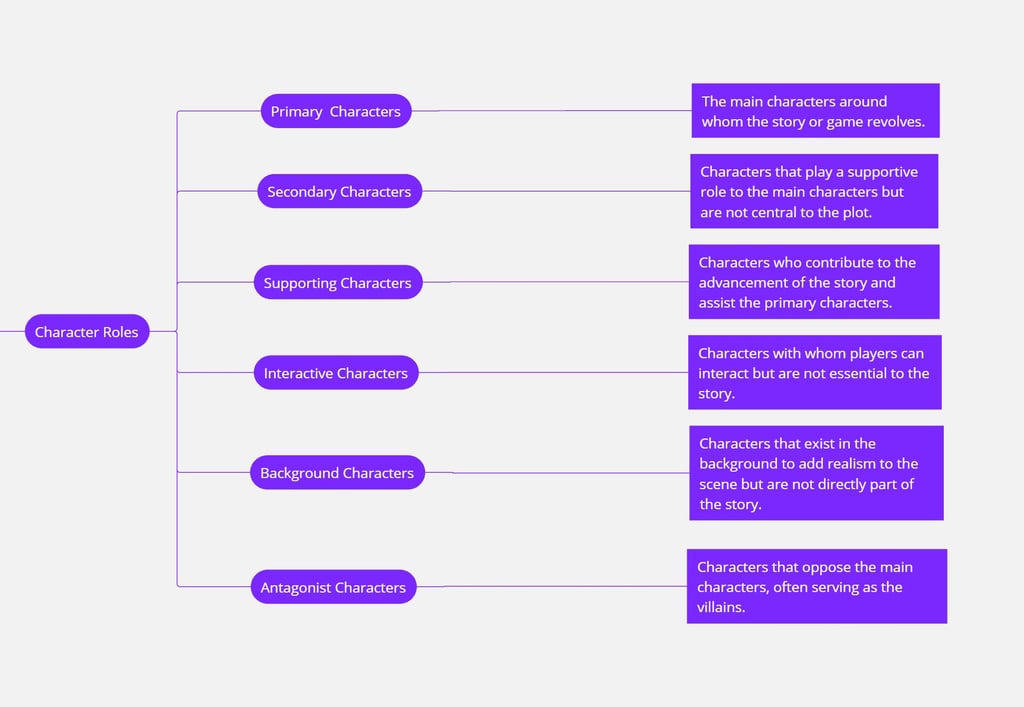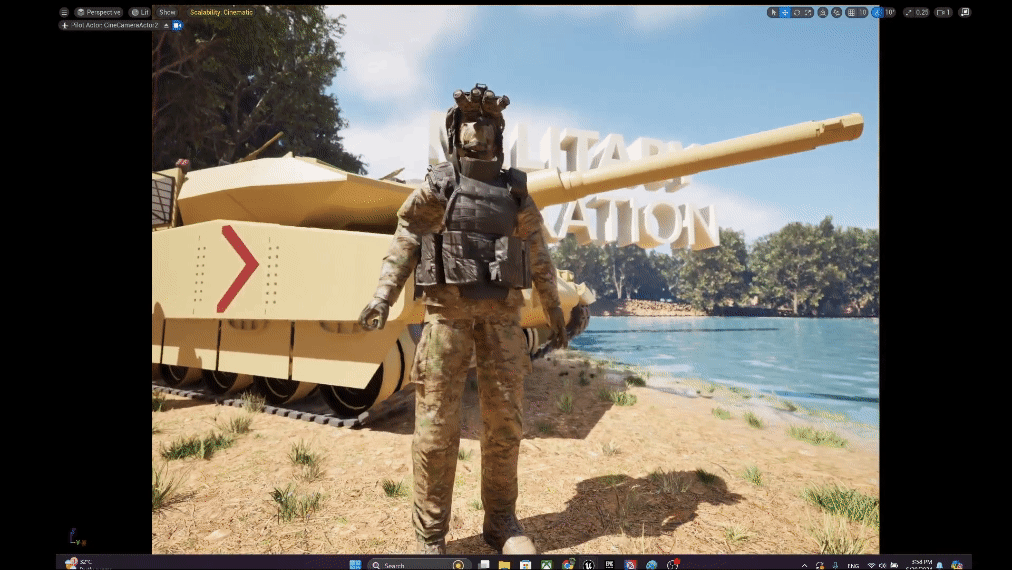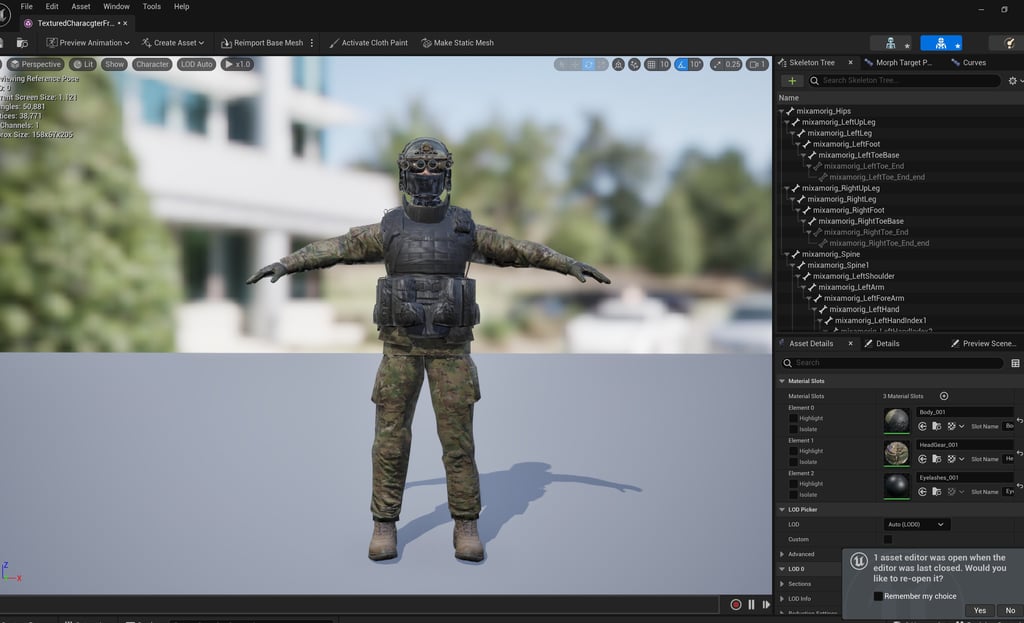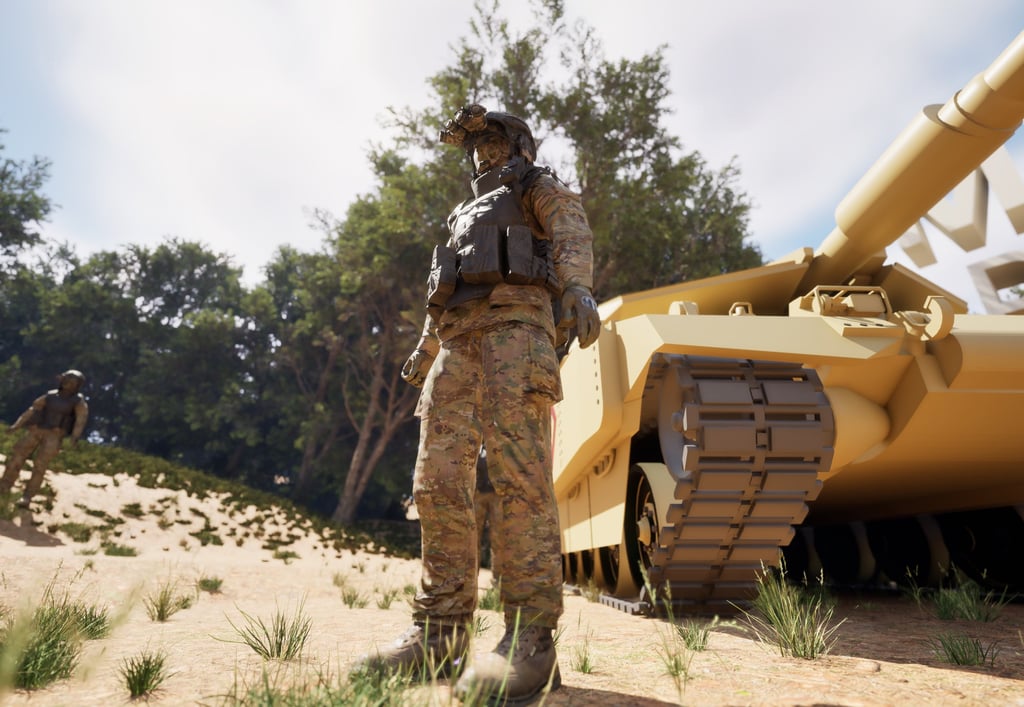Integrating Secondary Characters(Character Design)
My latest project focuses on integrating active elements into the scene, particularly introducing secondary characters related to the news being depicted. In this project, where the news pertains to a military operation, the main characters are soldiers. Here is a breakdown of the essential stages in the design process using Unreal Engine
SPRING QUARTER 2024
6/19/20243 min read
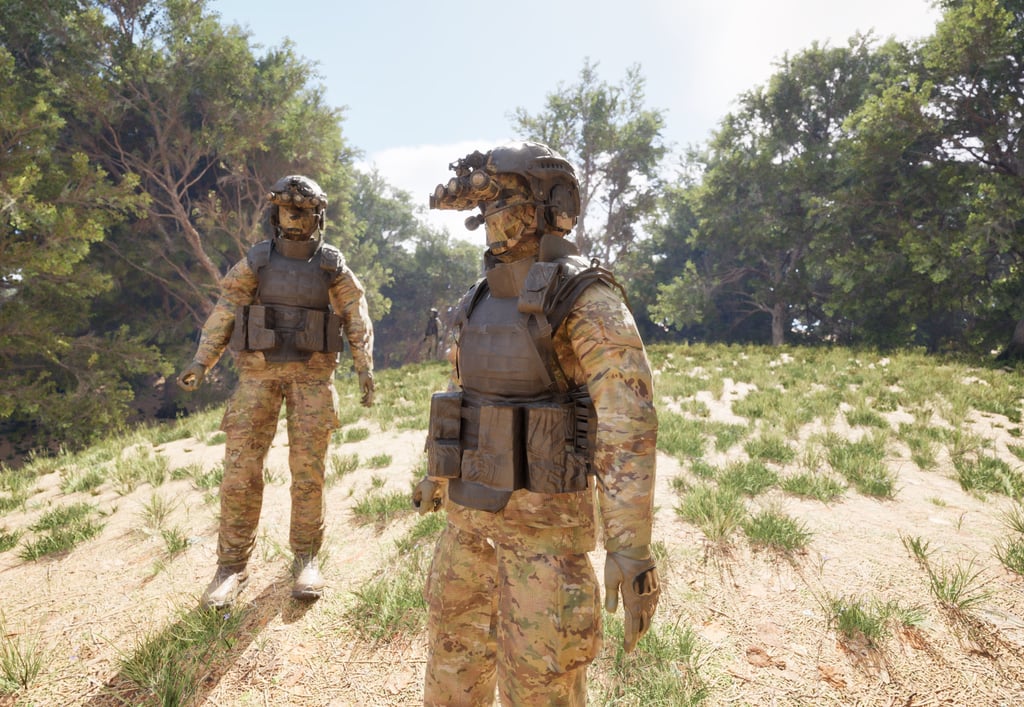

News-based gaming simulations represent an exciting synergy between the power of gaming technology and the opportunity of journalism, allowing audiences to experience news in an entirely new way. My latest project involves designing in-game interactives where the main action involves putting objects in or taking objects out of the scene, in essence, adding active elements to the narrative. With this news-based interactive that involves a military operation, the main characters added to the scene are soldiers. I will illustrate the process of my design with Unreal Engine using the following steps, defining the main goals.
1. Character Modeling
Acquisition and Import : Obtained the military characters’ model and imported into UE4 project.
2. Texturing
Surface Details: making sure the character looks right by adding finer visual details, such as military uniforms and equipment.
Military Uniform: Correct depiction of the detail and accuracy of military uniforms, especially insignia and pattern placement and coloration.
Results: Material Editing: This image is a close-up of the forearm, which was edited in the UE4 material editor – details such as the fabric stitching, wear on equipment, subtle changes in material color were tweaked.
3. Rigging
Skeleton Creation: This is defined as creating the core–skeleton structure which sets the limits on how the model animate, and is the primary skeletal structure for animating the model.
4. Animation
Action Mapping: Defining the actions the player can perform (standing, walking, running, bending, carrying, etc) so they can be combined in a way that’s natural for your particular game. These are just two of the problems-space you have to define in your systems. Scalability is all about identifying the multiple choices that divide up the systems space – think ‘if this, then that’.
Sequencer: Coordinating terabytes of visual data, such as synchronizing a military patrol, simulating combat scenarios, or programming interactive behaviors for crowd events.
5. Current and Future Phases
Current function: Here, the soldiers don’t have any particular active function. They simply populate the scene, conduct functional activity of the scene and add authenticity to the war operation for the camera’s view.
Next Phase: This will involve AI integration to allow the characters to play more integral roles, partnering or acting as enemies of the player.
Conclusion
Aligning key characters with news-based game simulations is a complex blend of design decisions starting with required attributes for accurate character depiction and advancing to advanced-level behaviour modelling and animation, all of which are supported through Unreal Engine tools such as creating Action Mapping, Sequencer and others. In the initial stage, seen here, an effort is made to build foundational blocks with designed events and characters acting as extras. However, the point in time where AI responsiveness commences will exponentially enhance the project by having viewers interact with avatars intrinsic to HRP deliverance in an extremely engaging way.
